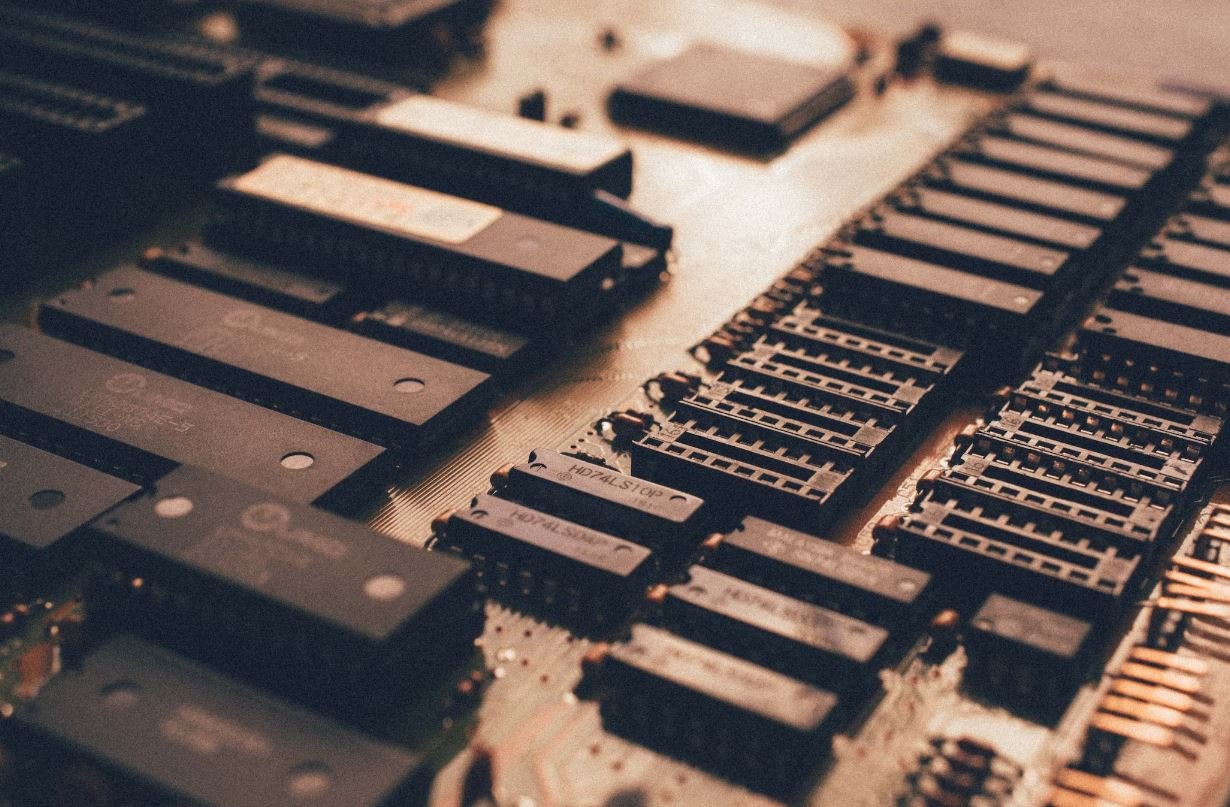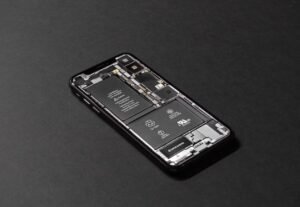Film Versus Digital Camera
With the advent of digital technology, photography has undergone significant changes. Traditionally, photographers used film cameras that required manual processing and printing. However, in recent years, digital cameras have become increasingly popular due to their ease of use and the ability to instantly view and share photos. This article compares film and digital cameras, examining their advantages, disadvantages, and overall impact on the photography industry.
Key Takeaways
- Film cameras offer a unique aesthetic and require careful consideration of each shot.
- Digital cameras are more convenient, allowing instant previews, easy editing, and sharing.
- Film photography requires additional costs for film rolls and processing.
- Digital photography offers greater flexibility, allowing experimentation and learning.
Film cameras
Film cameras use rolls of photographic film to capture images. Each shot is carefully composed and considered since there is a limited number of exposures on a roll of film. *Film produces a distinctive grainy look and can create a nostalgic effect in photographs*. However, film photography requires manual processing and printing, which can be time-consuming and costly.
Digital cameras
Digital cameras capture images using electronic sensors, allowing for instant preview and adjustment. With digital cameras, photographers have the flexibility to experiment and learn from their mistakes without incurring additional costs. They can also edit images directly on the camera or through software on a computer. *The convenience of digital photography has revolutionized the industry, allowing for immediate sharing and online publishing of images*.
Advantages of Film Cameras
- Unique aesthetic – Film cameras produce a distinct look with grain and color reproduction that some photographers find appealing.
- Slow, deliberate process – The limited number of exposures per roll encourages photographers to think carefully before pressing the shutter button.
Advantages of Digital Cameras
- Instant preview – Digital cameras allow photographers to see the captured image immediately, enabling adjustments to composition, exposure, and other settings.
- Convenience and flexibility – Digital cameras offer the ability to experiment and learn without the cost of film and processing.
- Easy sharing and editing – Digital images can be easily edited and shared online, enhancing the overall creative process.
Film versus Digital: A Comparison
| Aspect | Film Cameras | Digital Cameras |
|---|---|---|
| Image Quality | Unique film aesthetic with grain and character. | High resolution and improved image quality with advanced sensor technology. |
| Immediate Preview | No instant review. | Instant preview and adjustments possible. |
Disadvantages of Film Cameras
- Cost and time – Film rolls need to be purchased and processed, which can be expensive and time-consuming.
- Limited exposures – Photographers must consider the number of shots remaining on each roll of film.
- Inability to make instant adjustments – Film photographers must wait until processing to see the results and make any changes.
Disadvantages of Digital Cameras
- Image quality and sterilization – Some argue that digital images lack the organic and unpredictable qualities of film.
- Constant evolution – Digital technology rapidly advances, potentially rendering older cameras outdated.
Impact on the Photography Industry
The rise of digital photography has dramatically changed the photography industry. Photographers can now distribute and share their work instantly through various online platforms. This accessibility has allowed for a wider audience and greater exposure for many aspiring photographers. *Furthermore, the shift towards digital has led to significant advancements in camera technology, allowing for higher resolution, faster shooting, and enhanced features*.
| Aspect | Film Cameras | Digital Cameras |
|---|---|---|
| Market Share | Decreasing, more niche market. | Dominating, with a wide range of options at various price points. |
| Printing and Storage Costs | Higher costs for film rolls, processing, and storage of physical prints. | Lower costs with no film or processing fees, and digital storage options. |
The Future of Photography
While both film and digital cameras have their unique advantages and disadvantages, the future of photography seems to lean towards digital technology. With continuous advancements, digital cameras provide increasingly high-quality images and improved features, catering to the evolving preferences and needs of photographers. *However, film photography still maintains a dedicated following due to its aesthetic appeal and nostalgic qualities, ensuring its presence in the photography world for the foreseeable future*.

Common Misconceptions
Film and Digital Camera: Debunking Misconceptions
When it comes to the debate of film versus digital cameras, there are several misconceptions that people often hold. Let’s take a closer look at these misconceptions and clarify the truth about this ongoing discussion.
- Film is a thing of the past.
- Digital cameras are always superior in terms of image quality.
- Digital photography is easier and more convenient.
One common misconception is that film is a thing of the past, and digital cameras have completely replaced it. While it is true that digital cameras have become more popular and accessible, film photography still holds a significant place in the hearts of many photographers. Film offers a unique aesthetic and a sense of nostalgia that cannot be replicated digitally. Many professional photographers and enthusiasts still choose film for specific projects or personal preference.
- Film can provide a distinct aesthetic quality.
- Some photographers prefer film for its hands-on approach.
- Film can offer a different range of colors and tones.
Another misconception is that digital cameras always produce better image quality compared to film cameras. While digital cameras have improved significantly in recent years, film cameras can still deliver impressive results. Each medium has its strengths and weaknesses. Film can provide a distinct aesthetic quality that some photographers find more pleasing than digital images. It also has the potential for capturing unique hues and tones that may not be easily replicated in digital format.
- Digital cameras allow immediate previewing and editing.
- Backing up digital files is easier and more efficient.
- Changing ISO and other settings is simpler with digital cameras.
One misconception is that digital photography is easier and more convenient than film photography. Digital cameras do offer features like immediate previewing and editing, which can be beneficial for learning and experimentation. Additionally, backing up digital files is easier and more efficient compared to storing physical film. However, it is important to note that photography skills are independent of the medium being used. Film photographers learn patience, discipline, and thoughtful composition, which can result in equally stunning photographs.
- Photographing with film often requires more careful planning.
- Film is not limited by sensor technology or resolution.
- Digital workflow allows for quick sharing and online presence.
Lastly, many people assume that shooting with film requires more careful planning compared to digital photography. With a limited number of exposures per roll, film photographers need to consider composition, lighting, and other factors more consciously. On the other hand, digital cameras can shoot hundreds or even thousands of images in a single session, allowing for more freedom and room for mistakes. Additionally, film is not limited by sensor technology or resolution, meaning it can potentially produce higher-quality prints compared to digital cameras. However, digital photography excels in terms of quick sharing and presence in the online world, thanks to the ease of digital workflow.

The Evolution of Photography: Film versus Digital Camera
The invention of the digital camera revolutionized the world of photography in the late 20th century, challenging the long-established dominance of film cameras. This article explores and compares various aspects of film and digital cameras, showcasing their unique features and differences through ten informative tables.
Table 1: Camera Types
There are distinct camera types available in both film and digital formats, each offering different advantages and characteristics.
| Film Camera | Digital Camera |
|---|---|
| Single Lens Reflex (SLR) | Digital Single Lens Reflex (DSLR) |
| Compact | Mirrorless |
| Medium Format | Point and Shoot |
Table 2: Image Quality
Image quality plays a crucial role in capturing memorable moments, and the table below outlines the differences between film and digital cameras in this regard.
| Film Camera | Digital Camera |
|---|---|
| Unique analog characteristics | High resolution and sharpness |
| Grain | Noise reduction technologies |
| Dynamic range limitations | Greater dynamic range |
Table 3: Cost
Cost is a significant factor to consider when choosing between film and digital cameras. Evaluate the comparison below.
| Film Camera | Digital Camera |
|---|---|
| Initial camera cost | Higher initial cost |
| Cost per roll of film | Storage media cost |
| Development and printing | No development/printing expenses |
Table 4: Convenience and Speed
Convenience and speed are vital factors for photographers, whether professional or amateur. The following table highlights the advantages of film and digital cameras.
| Film Camera | Digital Camera |
|---|---|
| Limited shots per roll | Large memory capacity |
| Manual film loading | Instant review and retake |
| Time-consuming film development | Immediate digital image transfers |
Table 5: Photography Experience
The uniqueness of the photography experience varies between film and digital cameras as depicted in the comparison below.
| Film Camera | Digital Camera |
|---|---|
| Tactile and hands-on | Advanced features and settings |
| Anticipation of film results | Instant image preview |
| Waiting for film processing | Real-time editing and sharing |
Table 6: Environmental Impact
Environmental considerations are crucial in our modern society. Compare the environmental impacts brought upon by film and digital cameras.
| Film Camera | Digital Camera |
|---|---|
| Film production and chemicals | Electronic waste |
| Non-rechargeable batteries | Energy-efficient operations |
| Chemical film development | Reduced chemical usage |
Table 7: Resolution Comparison
Resolution plays a vital role in capturing details and quality. This table compares the resolution characteristics of film and digital cameras.
| Film Camera | Digital Camera |
|---|---|
| Varies based on film type | Determined by sensor megapixels |
| Grain determines effective resolution | Actual resolution reflected |
| Large format film yields high resolution | Ultra-high resolution possible |
Table 8: Longevity of Archives
Preserving photographs for future generations helps us cherish memories. Explore how film and digital cameras hold up in terms of archive preservation.
| Film Camera | Digital Camera |
|---|---|
| Proper archival methods crucial | Maintenance and backup required |
| Relative durability of physical film | Data corruption potential |
| Decades to centuries of longevity | Technology-dependent longevity |
Table 9: Artistic Expression
Artistic expression through photography can be achieved through different means. The table below showcases the aspects of film and digital cameras in this context.
| Film Camera | Digital Camera |
|---|---|
| Analog charm and nostalgia | Diverse post-processing possibilities |
| Emphasis on technical skills | Experimentation with various effects |
| Traditional darkroom techniques | Advanced digital editing tools |
Table 10: Market Trends
Market trends reflect the preferences and demands of photographers, influencing the availability and development of film and digital cameras.
| Film Camera | Digital Camera |
|---|---|
| Resurgence in niche markets | Innovation and constant advancements |
| Classic film camera enthusiasts | Wide range of affordable options |
| Specialty film stocks | Mirrorless domination in some sectors |
In conclusion, the comparison between film and digital cameras reveals a plethora of factors influencing the choice of camera for different individuals and circumstances. While film cameras offer unique characteristics and experiences, digital cameras provide undeniable convenience and technological advancements. Ultimately, the preference for film or digital depends on personal preference, artistic vision, and the requirements of each photographic endeavor.
Frequently Asked Questions
What are the main differences between film and digital cameras?
Film cameras capture images on photographic film, while digital cameras record images electronically using an image sensor.
Which camera type is better, film or digital?
The choice between film and digital cameras largely depends on personal preference and intended use. Film cameras offer a unique aesthetic and can be great for certain types of photography, such as portraiture or documentary work. Digital cameras, on the other hand, provide immediate feedback and endless possibilities for editing and sharing photos.
Are film cameras still used by professional photographers?
Yes, many professional photographers still use film cameras for their work. Film photography offers a distinct look and feel that cannot always be replicated digitally, making it a preferred choice for some artists.
What are the advantages of using a digital camera?
Using a digital camera provides several advantages, including the ability to instantly review and delete photos, easy sharing of images online, and the option to make adjustments to exposure and other settings without changing film rolls.
What are the advantages of using a film camera?
Film cameras have a unique and nostalgic quality to their images, often characterized by rich colors and subtle grain. Film photography forces photographers to slow down and be more intentional with each shot, leading to potentially more thoughtful and deliberate compositions.
Can digital cameras produce the same image quality as film cameras?
Modern digital cameras have significantly improved in image quality over the years and can produce stunning results comparable to or even surpassing those of film cameras in certain situations. However, some photographers argue that film still holds an edge in terms of overall image quality and dynamic range.
What are some factors to consider when choosing between film and digital cameras?
When choosing between film and digital cameras, it’s important to consider factors such as the desired image aesthetic, intended use, cost, convenience, and personal shooting preferences. The best camera type for an individual may vary depending on these factors.
Does film photography have any advantages over digital in terms of archival preservation?
Some argue that film has an advantage over digital in terms of archival preservation. While digital files can be lost due to technological advancements or hardware failure, properly stored negatives and prints can last for decades or even centuries. However, digital files can also be properly backed up and stored for long-term preservation.
Are film cameras more expensive to use than digital cameras?
Using film cameras can be more expensive than digital cameras in the long run, mainly due to the cost of film rolls, developing, and printing. Digital cameras, once purchased, have lower ongoing costs as they do not require film or chemical processing. However, the initial cost of a high-end digital camera can be considerably higher than a film camera.
Can digital cameras replicate the unique characteristics of film photography?
With advancements in digital image processing, including various filters and presets, it is possible to replicate the unique characteristics of film photography to some extent. There are numerous software tools and applications available that can mimic the appearance of different film types, grain, and color renditions.




